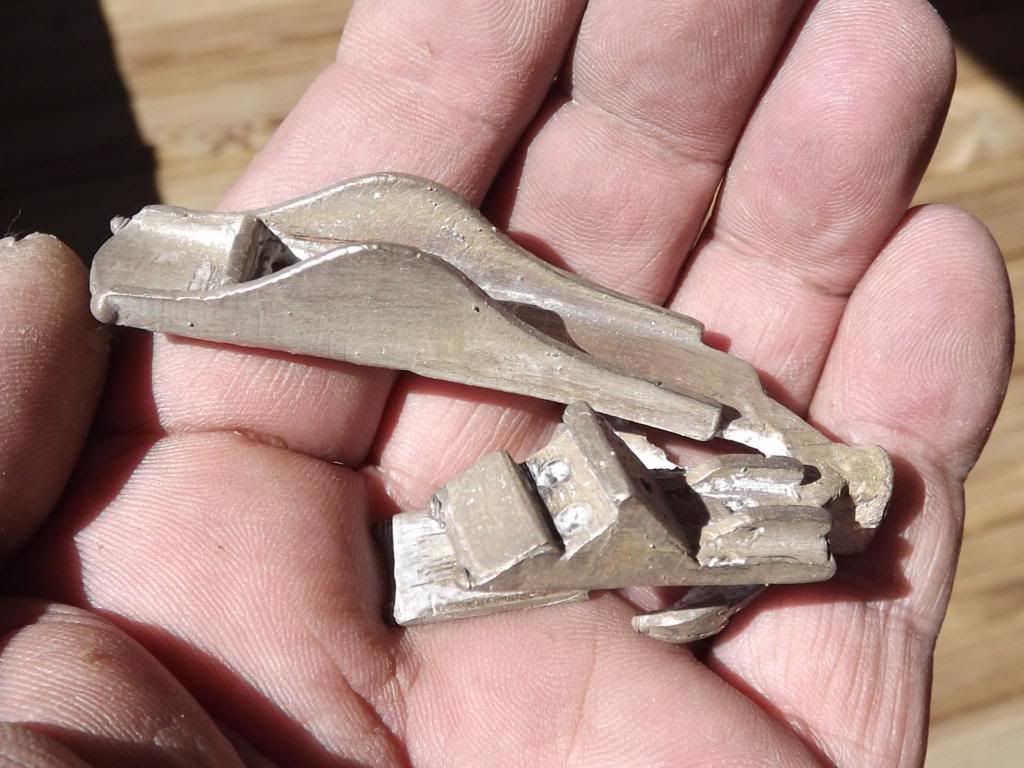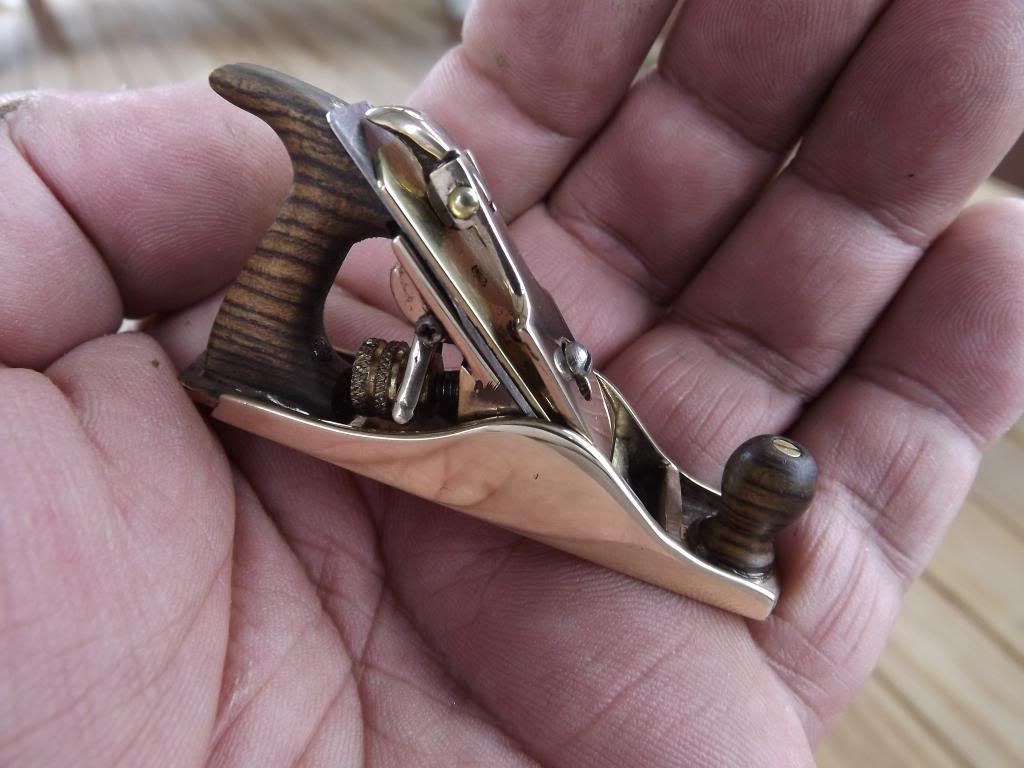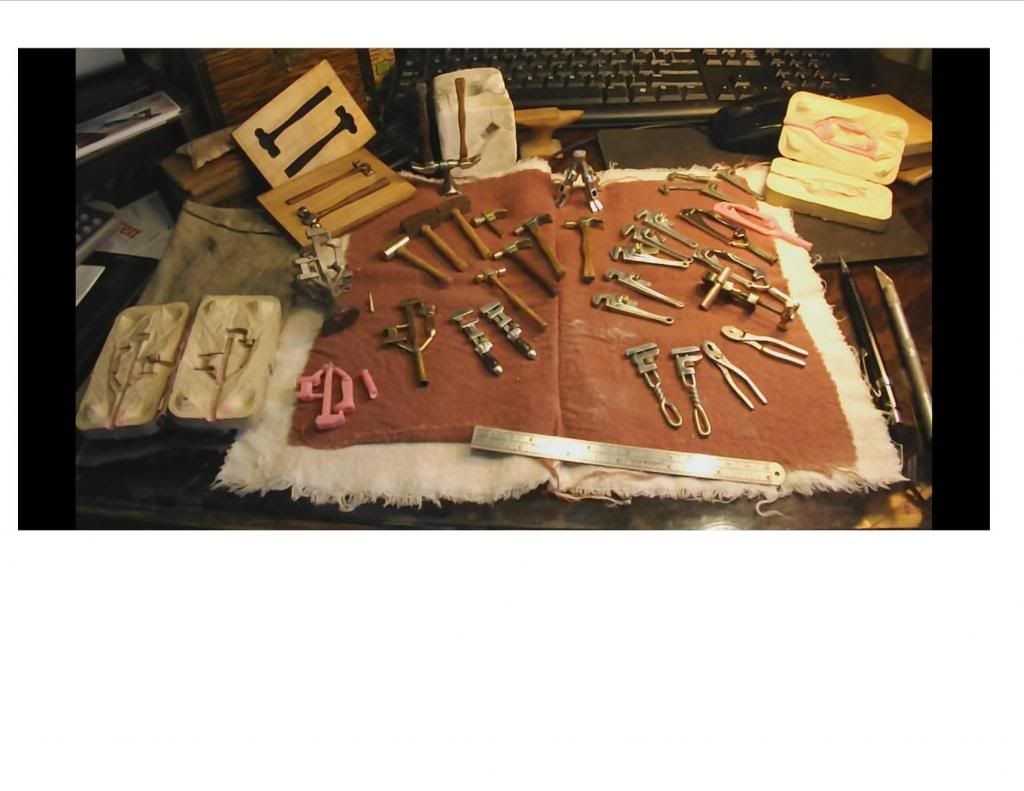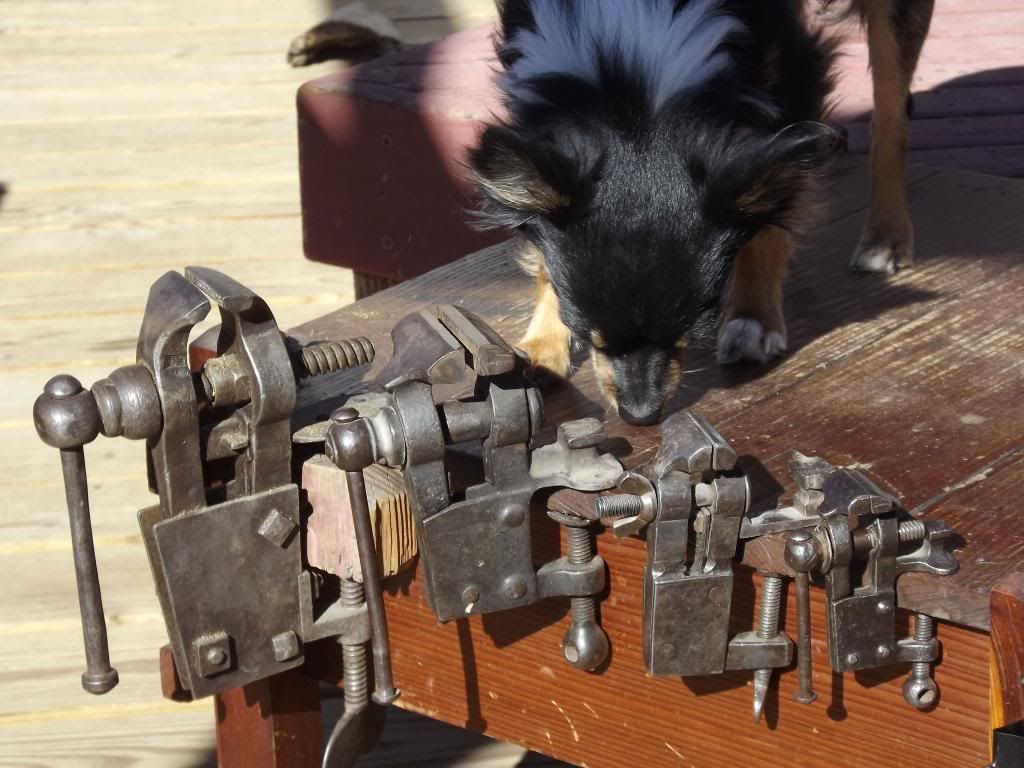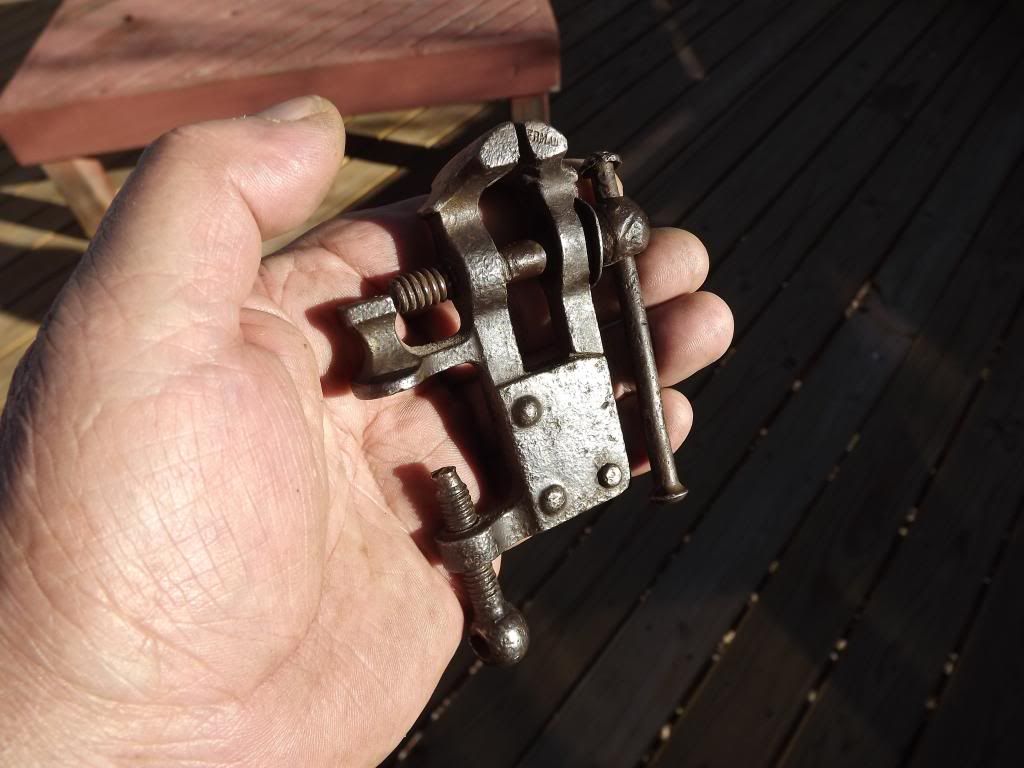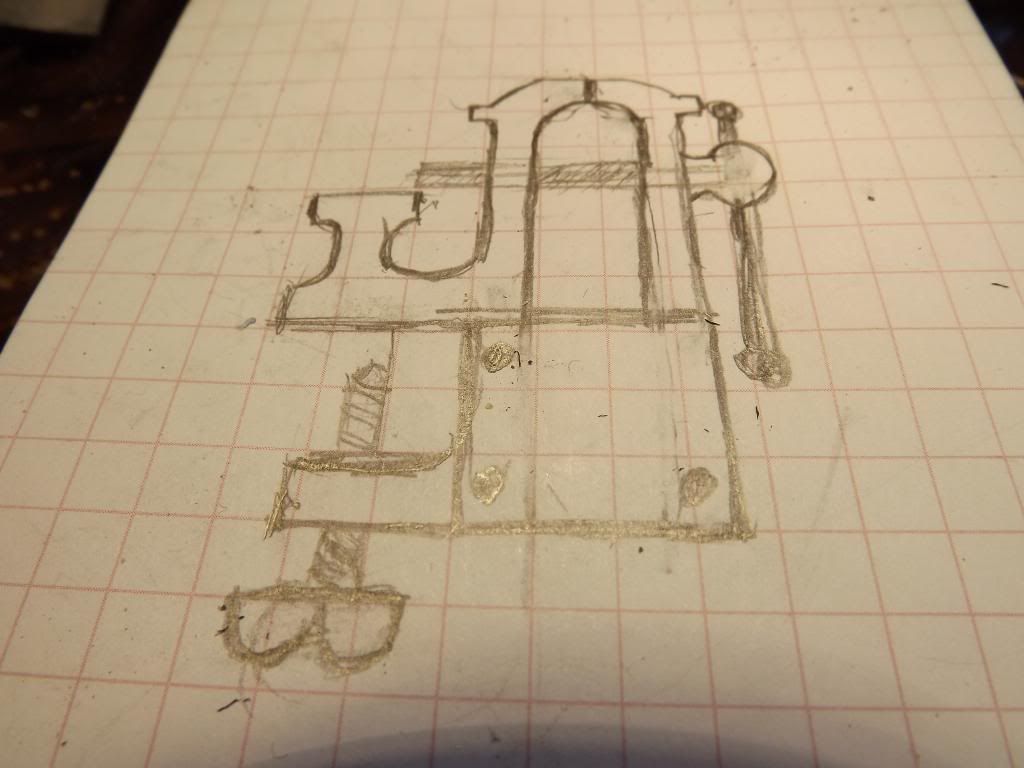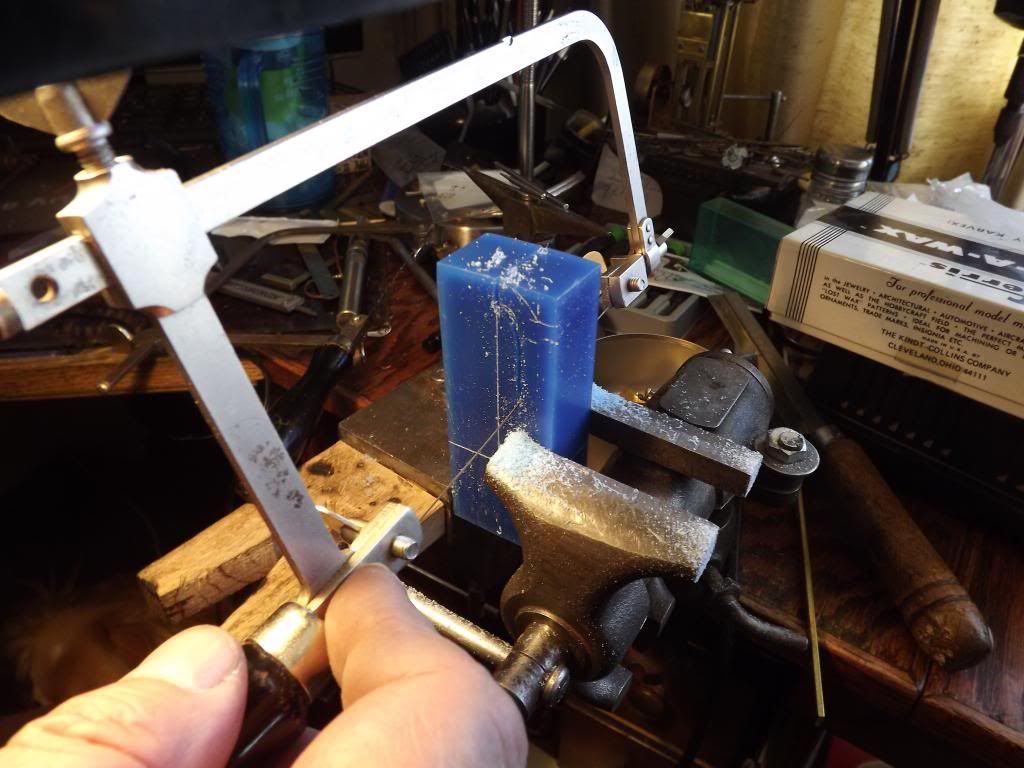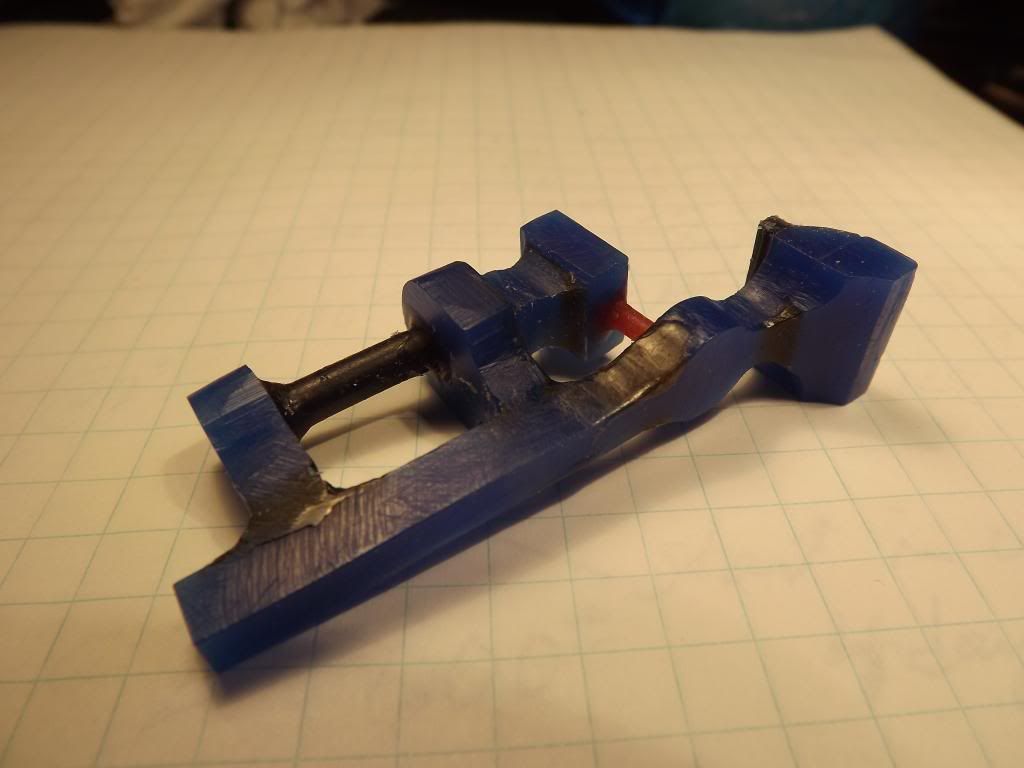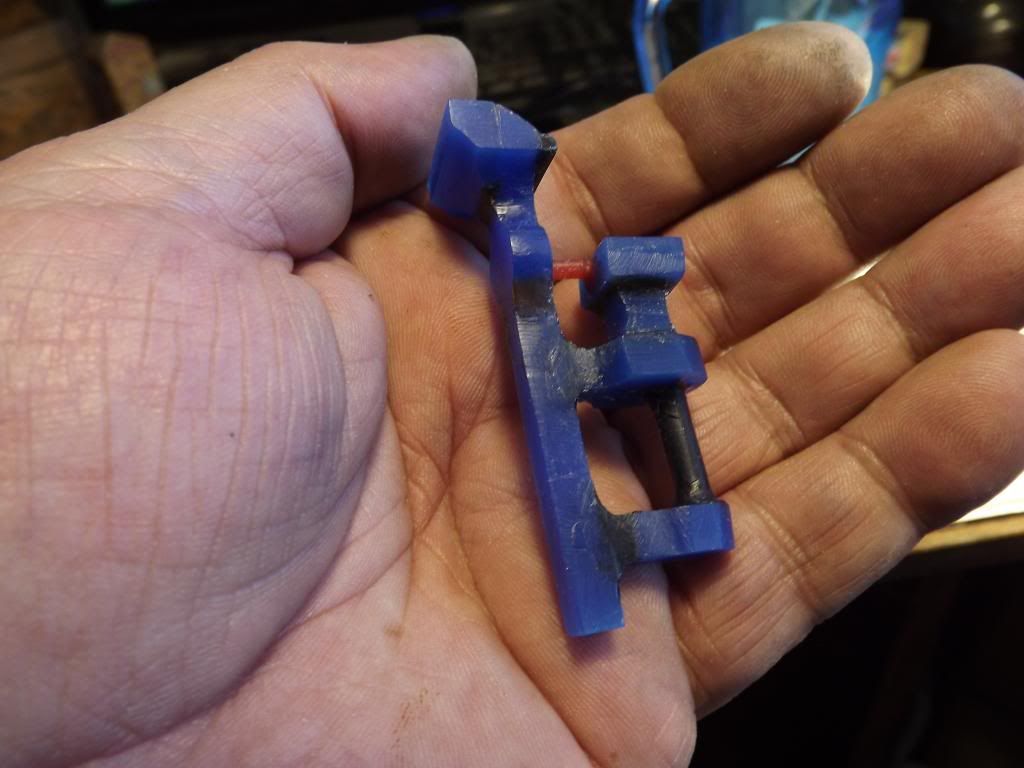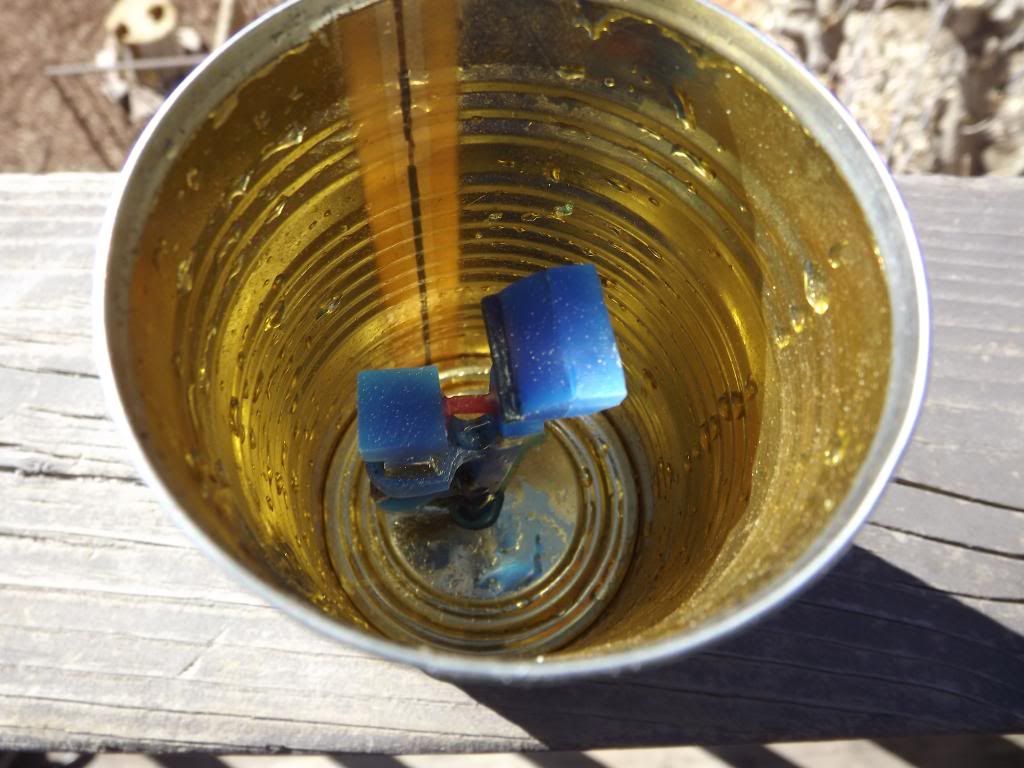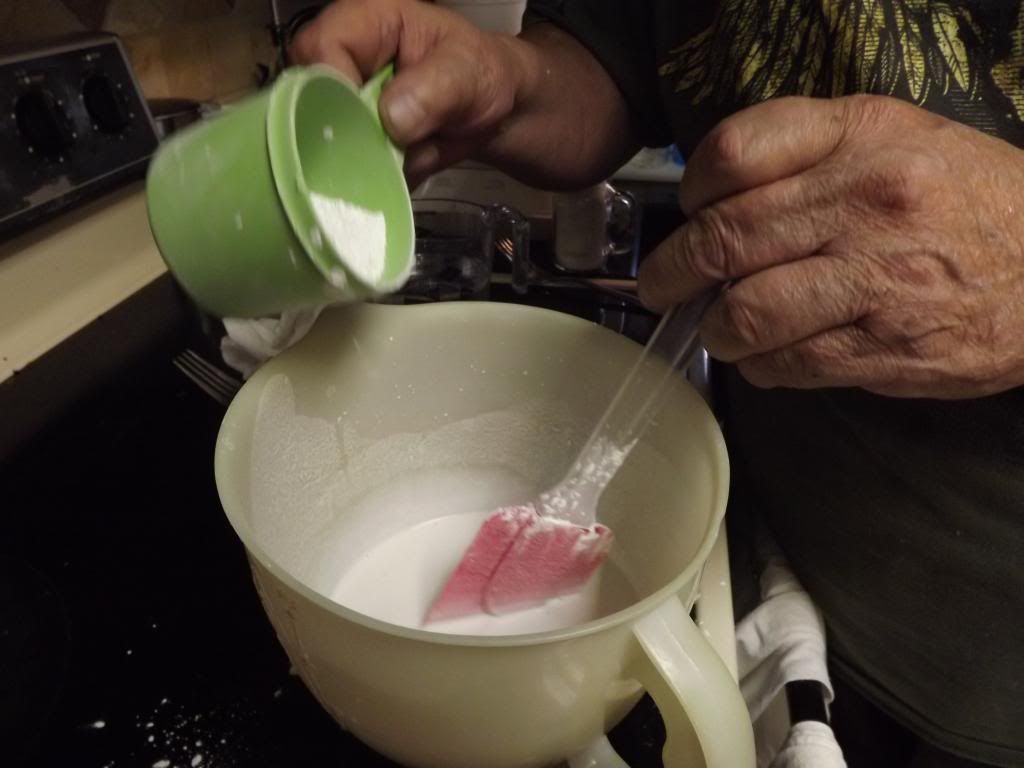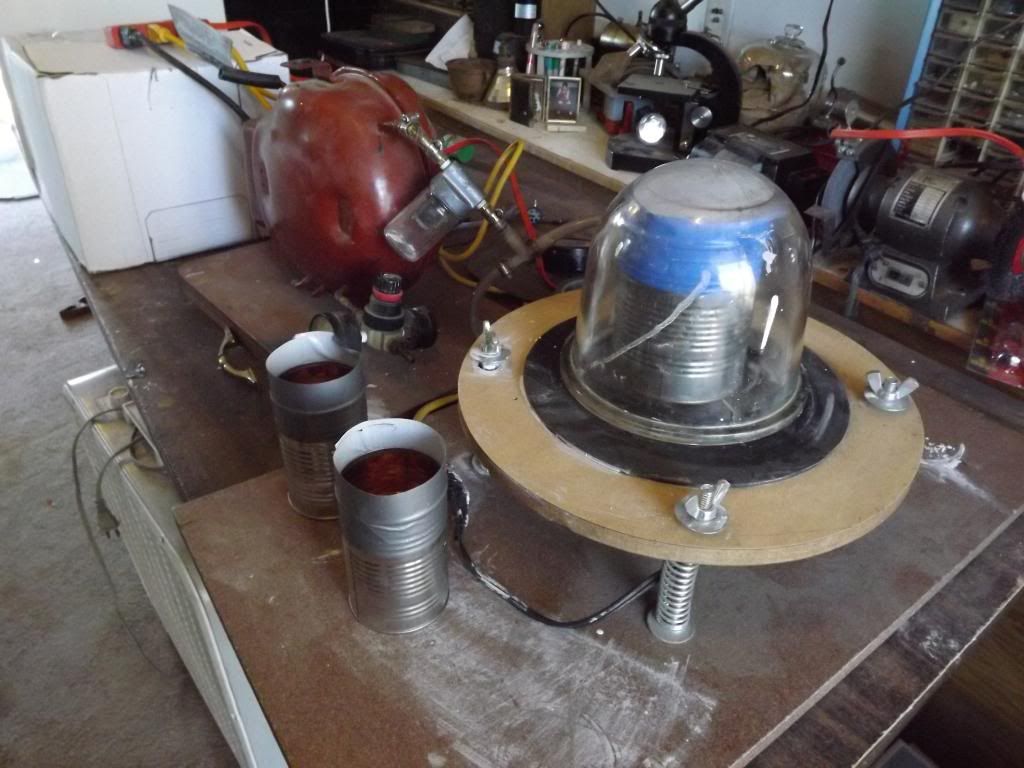Couple related items. These two casting trees may have nothing directly to do with woodworking, but are examples of a procedure in the lost wax casting process which I sometimes use to build woodworking planes. Ralph
A set of 4 hammer heads still "on the tree" resembling a flower. Just didn't have the heart to separate them.
A set of solid Gold jacks.
Cut from the tree and buffed. Now need polishing and the companion ball. These trees are on 1/4 inch background graph paper.
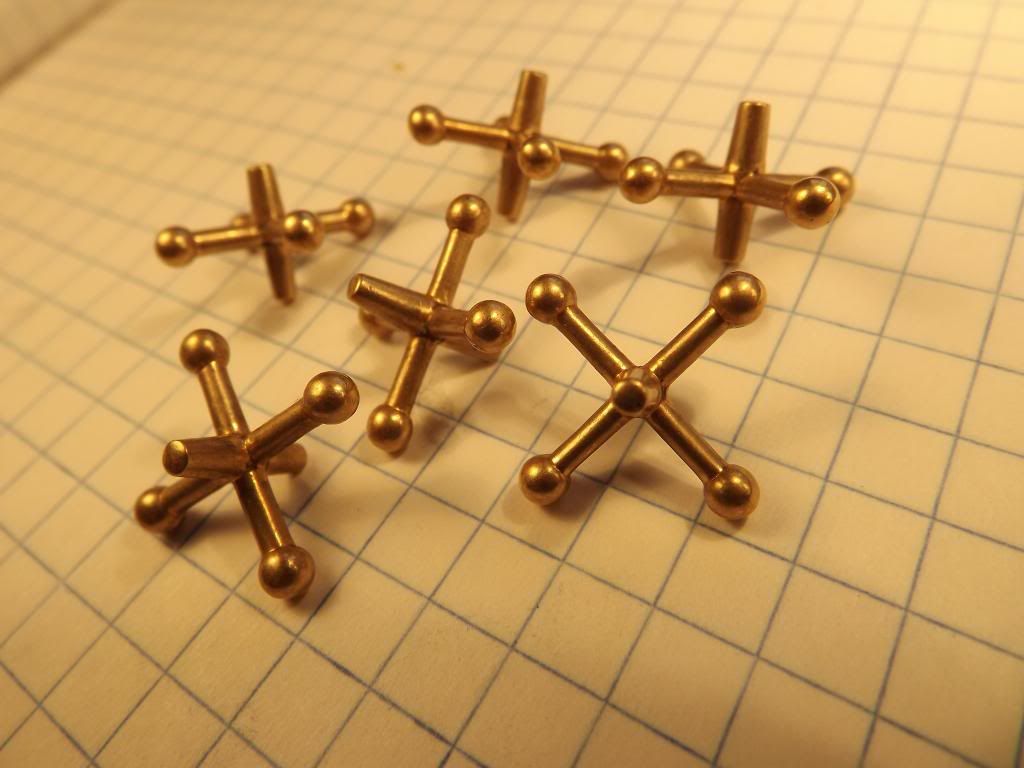





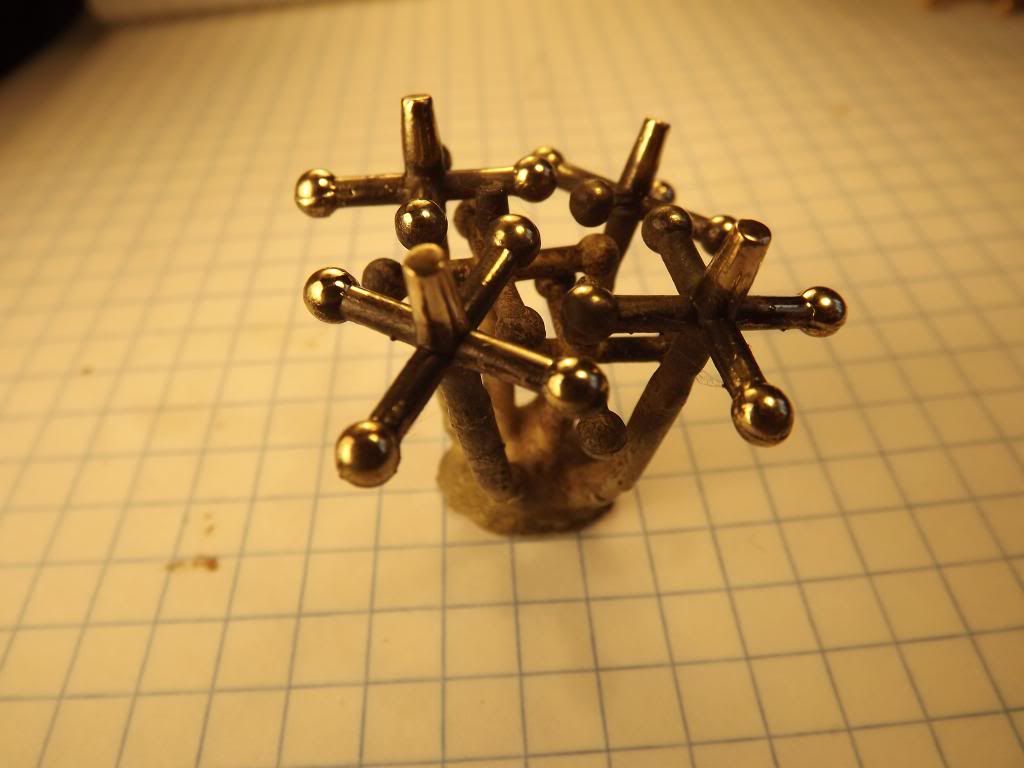

 Reply With Quote
Reply With Quote




